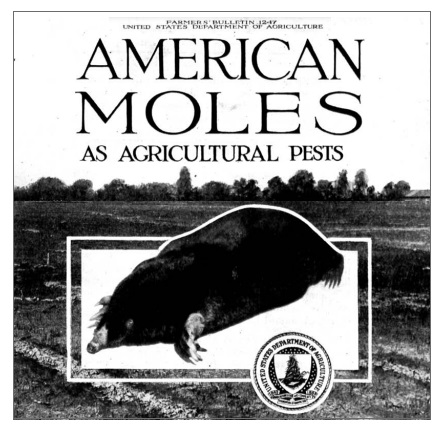Mole Behavior: Unraveling the Mystery

Despite all the obvious damage you see in your yard, mole behavior itself seems a mystery to homeowners in King and Snohomish Counties. Living and working underground, coming up rarely and primarily at night, the mole remains wily and elusive. Trying to understand his ways can be frustrating, so please allow Northwest Mole Pros to shine a light down that dark tunnel.
Mole Behavior: Social Habits and Habitat
Moles lead solitary lives. Growing up in the nest with siblings and mom is the only time they live together. When they leave the nest to establish their own territory, each will be the only adult in its own underground burrow system. Sometimes a male’s territory will overlap with that of a female, but never with another male’s.
As for population density, five adult moles per acre is typical in the Northwest.
Mole Diet
Across North America, insects are the food of choice for most moles. In the North King/South Snohomish County area, however, most moles are omnivores, meaning they select from the entire menu! Earthworms are the most popular selection, but moles in the Northwest also enjoy grubs and slugs; seeds, insects such as crickets, termites, and ants; and roots such as grass and vegetables.
The mole’s prey – insects, worms, and grubs – often dig down from the surface to utilize the mole’s tunnel. This creates “vents” in the tunnel that the mole will quickly repair. This behavior provides an opportunity for the professional mole hunter, who will poke holes at various locations to see which ones get filled in. This repair job indicates the presence of a mole.
Mating and Birth
Outside of the mating process, adult moles have little contact with each other. With three species of mole in the Northwest, the mating season will vary. Elevation also plays a part. In general, though, the mating season will occur between winter and early summer. The adult female will give birth once each year, producing three to five offspring.
Nesting female moles gather soft vegetation and leaves to line their nest. They typically select a location in the tunnel system that is high enough to avoid spring flooding.
When the juvenile moles are weaned, they leave their family home. As we said, they leave at night and travel on the surface in search of their new home territory. Newly independent young moles will typically stay fairly close to their origins, however, often within 30 yards. Reaching sexual maturity at around 10 months, moles will produce their own litter during the first breeding season, typically winter-early summer).
Mole Longevity
In the absence of predators (or professional mole exterminators), the mole’s lifespan is typically six years at most. Moles typically remain within their tunnel system for safety. If they do emerge, it is at night when they become prey for snakes and raptors such as hawks and owls. Mammals such as cats, dogs, coyotes, and raccoons will also attack moles, though they tend not to eat them, as their fur contains a powerful, bitter, foul-tasting oil.
Spring flooding in the tunnel system can kill small, less mobile infant moles, while mature moles will typically evacuate to higher ground.
Mole Behavior Mysteries Unraveled – Now What?
Knowing the mole’s behavior and habitat allows Northwest Mole Pros to effectively eliminate this destructive pest. And that’s the plan: eliminating quickly and effectively and guaranteeing our results! If you are a homeowner in North King or South Snohomish County and you’re tired of fighting the mole on your own, call for backup! Contact Northwest Mole Pros today!
